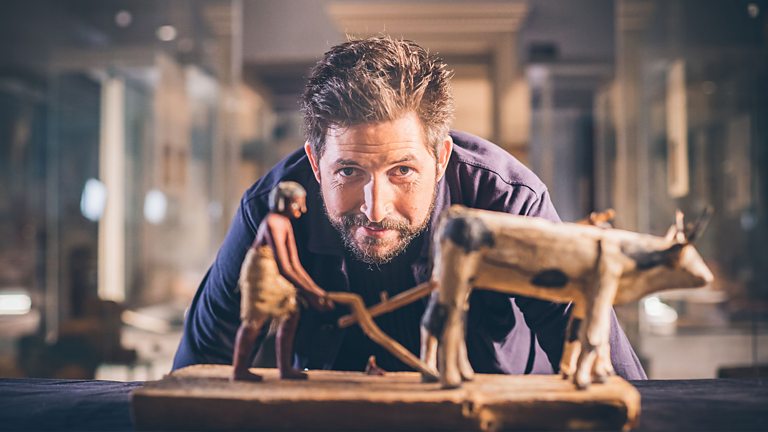Nature and Us – A History through Art episode 3: In the concluding episode of the series, James explores how the art of the last hundred years reflects how we swapped nature for progress in the first half of the 20th century before rediscovering its beauty in the decades following the Second World War, and how today’s artists are re-imagining our future relationship with nature.
The film begins in the first decades of the 20th century, an era of human self-confidence, intent on conquering nature. In the art of Piet Mondrian, James explores how an artist who began life as a landscape painter gradually leaves nature behind, tidying up the messy reality of nature into abstract lines. We meet Chinese artist Yang Yongliang on the streets of New York, whose sprawling digital landscapes ask questions about our drive for rapid urbanisation.
James continues to explore this story through the images of one of the best photographers of the last century – and one of its most brilliant women – Margaret Bourke-White. In 1930, she was the first professional western photographer to be allowed into the Soviet Union, where she captured the rapid transformation of the country from being largely rural into a modern, industrial state. James moves on to explore how the destructive power of the atomic age both terrified and inspired artists in the 1940s and 1950s, from painters like Bittinger to the world of sci-fi films.
Nature and Us – A History through Art episode 3
We then see the arrival of a new kind of art – land art. In the late 60s and 70s, a growing number of artists left the city and started working not only in nature but with it. We meet two contemporary land artists based in New Zealand: Philippa Jones and Martin Hill, who use natural materials to create sculptures in the landscapes of New Zealand’s South Island. And finally, we explore how artist collective Random International are using technology to explore our future relationship with nature – through a series of mesmerising art works.
James finishes the episode and the series asking questions of the interviewees who have appeared across the series. How do they see our future relationship with nature?
He concludes that on the long journey we humans have been on since our beginnings, artists have played a vital role not only in reflecting but also shaping our attitudes to nature. They’ve helped us understand its intricacy, appreciate its beauty, and now – when the entire planet seems under threat – they can help us forge a new relationship with it.
Piet Mondrian
Pieter Cornelis Mondriaan, was a Dutch painter and art theoretician who is regarded as one of the greatest artists of the 20th century. He is known for being one of the pioneers of 20th-century abstract art, as he changed his artistic direction from figurative painting to an increasingly abstract style, until he reached a point where his artistic vocabulary was reduced to simple geometric elements.
Mondrian’s art was highly utopian and was concerned with a search for universal values and aesthetics. He proclaimed in 1914: “Art is higher than reality and has no direct relation to reality. To approach the spiritual in art, one will make as little use as possible of reality, because reality is opposed to the spiritual. We find ourselves in the presence of an abstract art. Art should be above reality, otherwise it would have no value for man.” His art, however, always remained rooted in nature.
He was a contributor to the De Stijl art movement and group, which he co-founded with Theo van Doesburg. He evolved a non-representational form which he termed Neoplasticism. This was the new ‘pure plastic art’ which he believed was necessary in order to create ‘universal beauty’. To express this, Mondrian eventually decided to limit his formal vocabulary to the three primary colors (red, blue and yellow), the three primary values (black, white and gray) and the two primary directions (horizontal and vertical). Mondrian’s arrival in Paris from the Netherlands in 1911 marked the beginning of a period of profound change. He encountered experiments in Cubism and with the intent of integrating himself within the Parisian avant-garde removed an ‘a’ from the Dutch spelling of his name (Mondrian)




